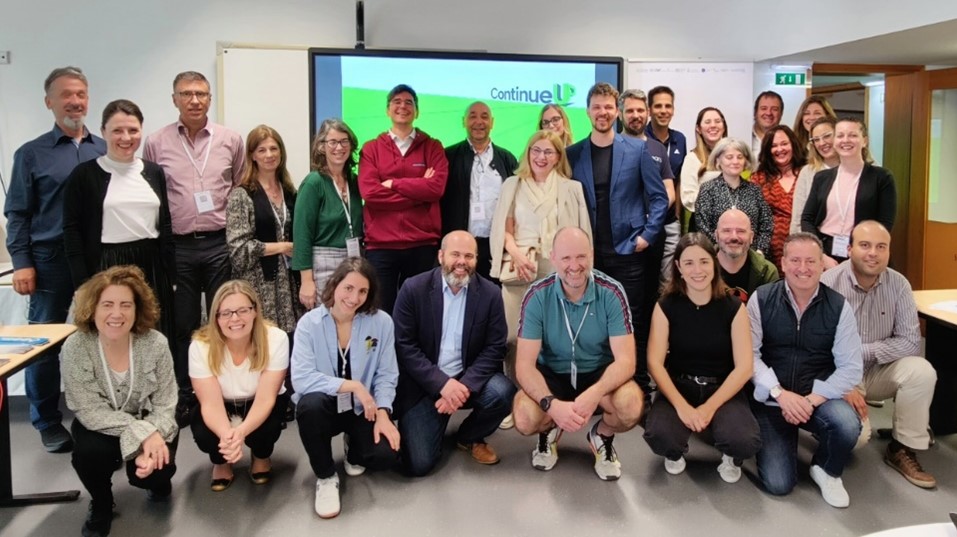This website use cookies to ensure you get the best experience on our website
ContinueUP Development Diary #3 – How to benefit from the expertise of each?
ContinueUP Development Diary is a series of articles updating initial teacher educators (ITE), continuous professional development (CPD) trainers, as well as teachers about the progress made in the development of the ContinueUP project; In this series we explain the challenges encountered and how we address them, evaluating the complex process of co-creation that involves ITE and CPD providers from three countries.

The second study visit took place in Portugal
Welcome back to the third instalment of the ContinueUP Development Diary! In this article, we explore the progress made since the first study visit and we get some interesting insights from the discussions that took place on April during the second study visit at Póvoa de Varzim in Portugal.
During this three-day event, partners learned about local teacher education and training practices, worked on the ContinueUP education and training programme and came together to share their conclusions and collect feedback.

Working on content & activities in between study visits
If during the first study visit, partners had reached an agreement about their general expectations for the ITE Module and CPD MOOC., in preparation of the 2nd study visit, they worked on the details of content and activities of the study and teaching programme. To achieve this, the CPD and the ITE teams decided that each organisation/country would take the lead on developing a specific section and competence area of the Module and the MOOC.
Between the two study visits the ITE team and CPD team met online regularly among themselves. The link between the two teams was established through “learning spies” who were appointed by each team in rotation every few weeks. Every time a team met online, a learning spy from the other team was present. The learning spy both gave feedback on the host team’s work and reported back to their own team. After each meeting the learning spy summarised their observations on a collaborative online document that was passed on to the next learning spy. This ensured that both teams were aware of each other’s work and could consider any decisions taken by the other side.
However, it soon became clear that this setup was not sufficient to create a strong connection into the education and training programme. Therefore, both teams decided that more direct collaboration was needed for the next study visit.

Strengthening the continuity between the ITE and CPD content
The 2nd study visit kicked off ith another “reflection session” focusing on how partners collaborated in the past weeks. They looked back at what their discussions about co-creation in the first study visit and evaluated how well they implemented actions to improve collaboration and continuity, such as using learning spies. Despite the link provided by the learning spies, the partners realised that they needed to strengthen the continuity between the content and activities of the ITE Module and CPD MOOC. During the study visit, they worked in teams organised by topic and expertise, including partners in initial teacher education (ITE) and continuing professional development (CPD) . These teams were assigned to focus on the ensuring continuity, progression and alignment within each section of the Module and the MOOC. For example, ITE providers responsible for the “reflective practice” in the ITE Module, collaborated with their CPD provider counterparts working on the corresponding section in the MOOC. While this helped taking concrete decisions on developing the content and activities further, it also became clear that partners’ perception of continuity were not always aligned. Hence, a key outcome of this study visit was the decision to continue these bilateral meetings between ITE and CPD providers addressing the same topic in the upcoming weeks.
Bringing external eyes on board
During the discussions at the 2nd study visit, partners recognised that they were deeply immersed in the co-creation process, making it challenging to offer a clear and unbiased perspective on the progress achieved so far, in order to identify where more work was needed. Accordingly, they agreed that getting an external eye from someone not involved in the process would be very useful at this stage. Associate partners and colleagues from participating organisations who were not working on the project were identified as candidates to provide such an external perspective immediately after the study visit. In addition, later in May and June, there will be another occasion to collect external feedback as the consortium will share their work with a group of in-service and student teachers for discussion in dedicated focus groups. Join us in our next diary entry where we will examine in more detail these teacher focus groups reviewing the draft content of the programme.